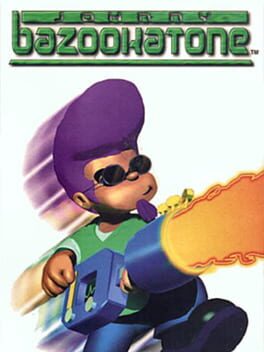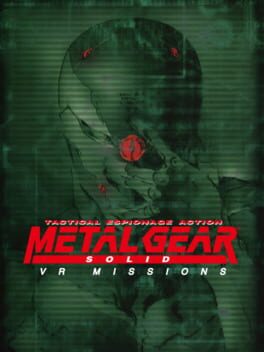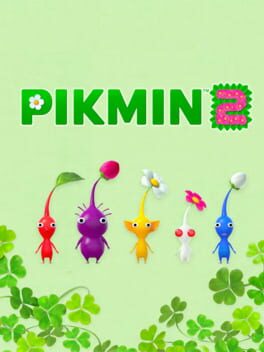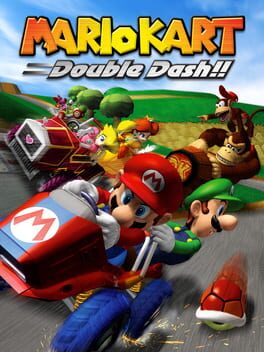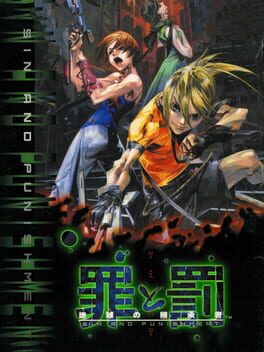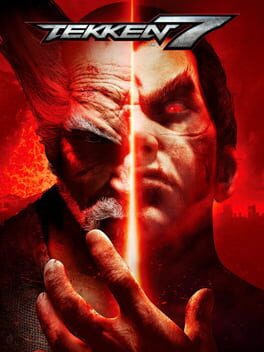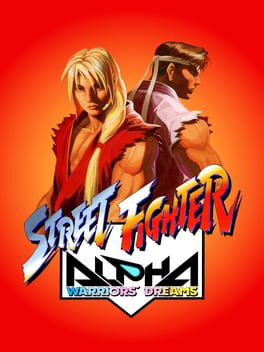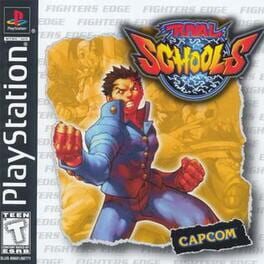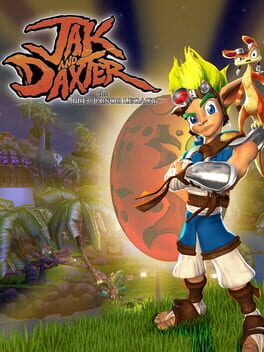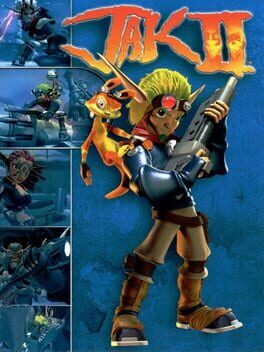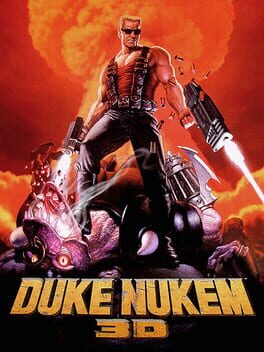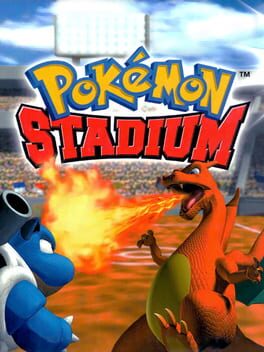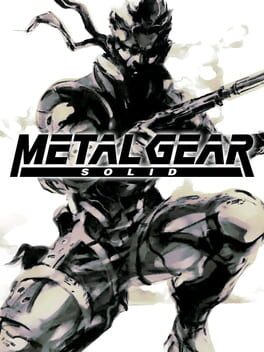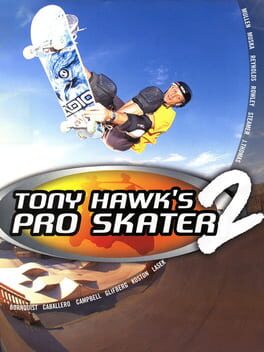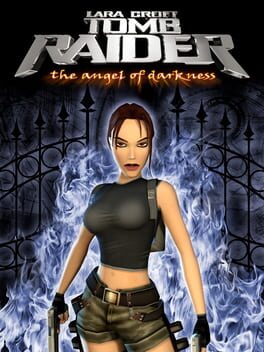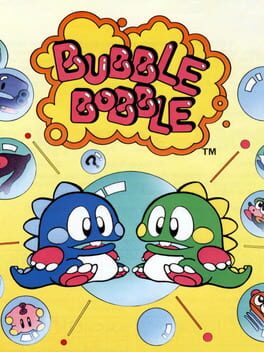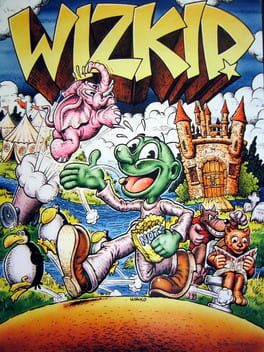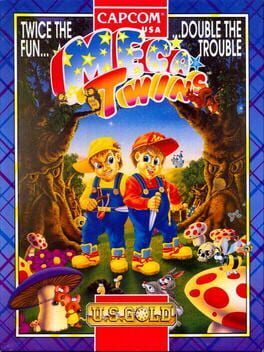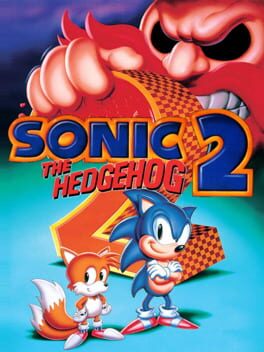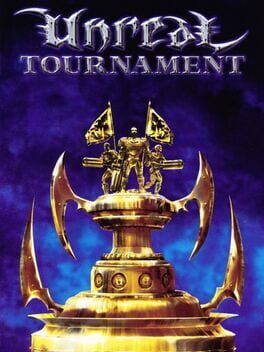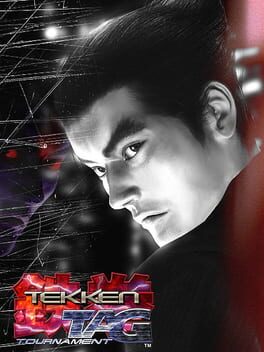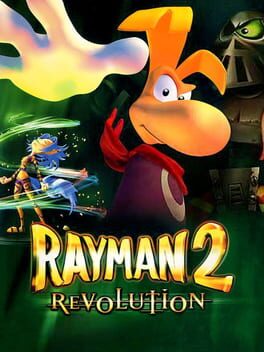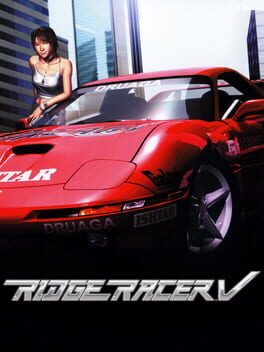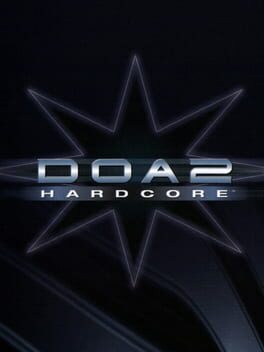Oven
53 reviews liked by Oven
You have chosen to read my Princess Peach: Showtime! review. This is on you, now.
I think it's worth reflecting on how Peach wasn't really even a character in the original Super Mario Bros. She was a destination. The MacGuffin you needed to reach in order to rightfully claim you'd won the game. The idea to expand beyond that in any way was largely an act of convience, as Fuji TV's Yume Kojo: Doki Doki Panic was rebranded as the second Super Mario game. They needed a roster of four heroes, and there had only been four sentient things in the Mushroom Kingdom that weren't enemies. They took the spritesheet for Lina and drew "The Princess" on top.
I don't point this out to demean or belittle Princess Peach. Far from it. The act of repurposing and rebranding is at the very core of what videogames are. Mario, himself, was the result of seeing what could be done with an unwanted Radar Scope arcade board, and missing out on the opportunity to use Paramount's Popeye characters. OXO, Tennis for Two and Spacewar! were all experiments to see if large-scale supercomputers designed for complex business calculations and global warfare could be used for the purpose of fun. Peach has quite rightly earned the title of Princess of Videogames. A direct descendant of the cathode-ray tube amusement device.
From her first playable appearance in Super Mario Bros. 2, she was treasured by little sisters, cartoon studios, and boys who valued the float-jump more than the societal pressures of homophobia and gender stereotypes. By Mario 64, her significance to the Mushroom Kingdom was fully fleshed-out, positioning the entire game within her castle, and illustrating her unwavering benevolence, ethereal presence, and also, her sense of fun with the introduction of her personally-commissioned Secret Slide. She was a true representative of videogames, and a welcoming presence for audiences who may have felt uninvited to the games gang.
In 2024, I feel Nintendo are more aware of the weight of their history. Back when they last tried this, with 2005's Super Princess Peach, there was an air of carelessness. It was a throwaway game, fobbed off to Chubby Cherub/Shrek: Reekin' Havoc devs, Tose, and launched to a market whose respect for Nintendo had already taken a beaten from the likes of DK: King of Swing, Super Mario Ball and Classic NES Series: Ice Climber. Now, Nintendo treat Peach with due reverence, having her host Universal Studios meet-and-greets in her own personal bandstand, as the highlight of millions of holidays. People are thrilled to meet her, regardless of how much spaghetti she's made for them.
Right now, we're in a very odd period for the Mario brand, overall. Nintendo have embraced the idea that there's no unified vision of what Mario is. In the last year, we've had a mainline 2D entry closely modelled on the art direction of Masanobu Sato, a major Hollywood movie that denied post-1994 backstories and reinstated the NES-era US canon, a remake of a very of-its-time mid-nineties Mario RPG, and the announcement of the remake of a very distinctly eccentric fan-favourite GameCube RPG. Mario has become Mr. Video again, appearing in all sorts of different projects, merely as a comforting presence. He's a doctor and an artist and a kart racer and an umpire and we're not supposed to take any of it very seriously.
The dynamic sits awkwardly in relationship to why New Super Mario Bros. took its iconography so seriously in the first place. Back then, it was a relief to see the series discard all the bullshit and get back on target, reinstating what was Real Mario Shit. Goombas were Goombas again, and if there were any weird offshot baddies, fans would need to adopt such convoluted nomenclature as "Mega Para-Biddybuddies". It felt like the programmers had taken more control, with the world defined by hard parameter references. There's a stiffness to that approach that I have a lot of affection for, and it was the lifeblood of the Wii U era (particularly in Europe and Japan). It brought us closer to the logic of the software, subconsciously making us better equipped to appreciate and understand it. It was fiercely objective. It's easy to see why this approach wouldn't resonate with the wider public, though. If Nintendo wanted to catch on to mainstream appeal, they'd need to foresake the concrete utility of their playing pieces and expand their surface-level appeal. During the promotion of the New Super Mario Bros. sequels, developers explained that Peach hadn't been made playable in the game because of how her float-jump would affect the balance of the level design. In Showtime, she doesn't even have the float-jump.
Ah - Here we are.
I don't really like Princess Peach: Showtime very much.
I could come out with excuses, justifications, characterisation discrepancies... I just think it's boring to play. Levels are formulaic and repetitive, there's little dexterity to its gameplay, the rewards system feels like you're playing the game wrong if you're not constantly digging at the scenery to find every hidden item, performance and presentation is way below where it ought to be for a game with this focus, yada yada yada... I don't think it really matters. I just didn't want to play the game very much. The first couple of days I had it, I was telling myself I was too busy to calm down and enjoy it. I spent multiple days away from it before completion, and only went back to it out of obligation. I really wanted to care less, and not bother coming back.
As much fondness as I may have for the character, I'm clearly not the target audience for this. And I don't mean to imply that it's a game strictly for young girls, either. But it probably is for fans of recent Yoshi games. I'm certainly not one of them. As I dodder around, looking at the nice artwork, but wondering what I'm supposed to be getting out of it. It's a bit of a shock to see Mystical Ninja's Etsunobu Ebisu come back to a directing role to make something so devoid of spark or humour. Though the different costumes grant Peach a range of diverse abilities, the structure of each introductory level is largely the same, and the bulk of her more intricate actions are automated. In a move that recalls Metroid: Other M, all core actions have been distributed between two face buttons, and if there's anything particularly acrobatic or impressive, it doesn't often feel like you were very involved in performing them.
Showtime is fun in theory. The level themes are bold and exciting, Peach's costumes and in-character voice clips are cute, there's a lot of great art and punny design. I saw one review compare it to Kirby and the Forgotten Land and became incensed. That's a game that loves being a game. It celebrates the medium, embraces all the tropes that come with being a platformer, and sets up young audiences to embark on a future, exploring many wonderful videogames. Showtime is like Paper Mario with all the jokes, strategy and compelling gameplay stripped out. It's an RPG without story or combat. If you wanted to dedicate a budget to having a team design a bunch of charming adventures for Princess Peach to go on, I can totally get behind that, but why make this game when your passions and energy were better suited to a series of YouTube shorts, or a pop-up book?
There's definitely things I wanted to like. I felt like I should have liked. There's several parts of the concept that feel like they're paying off on things they established with Peach's character years ago. The fact that Odyssey ended with her setting off to explore the world in a bunch of cute outfits feels like it was leading up to an idea like this. They're making a game with Cowgirl Princess Peach, for god's sake. How haven't I come away raving about it? It's just all so tame. Mermaid Peach sings underwater to guide helpful fish, and that sounds like something I should have adored, but they never take the next logical step with one of those trademark Nintendo Switch vocal themes. Why didn't they want this game to be brilliant?
Something that surprised me is how bothered I was by the stageplay concept. The notion that to some level, this was all pretend. That Peach is taking on the role of a character for each level. Her voice sounds different for a bunch of them. I don't really feel like this is a game about Peach. It's about her playing the part of generic characters. I didn't feel any sense of drama until the very end, when she emerges outside of the Sparkle Theatre, as herself. It was the first thing since the intro that the game was trying to convey as authentic. Maybe if I just believed in the game - like there was a real throughline that meant each level was an important new part of a story - I wouldn't have been so bored with it. You really don't have to do a lot to get me with this stuff. I honestly found myself crying when I first heard Odyssey attempt to finally convey Peach's perspective on her relationship with Mario. Is this what a good story has to offer a game? As it is, it felt like I'd bought a colouring-in book, and for some bizarre reason, it was important that I finish every page.
This is very much a 'me problem'. I hope I've established my criticisms as fiercely subjective. I can see some folk getting a lot out of this. I've heard some say that they loved Yoshi's Woolly World. I certainly don't want to convince Nintendo that people don't like Princess Peach games. It's just that I had to play through Sexy Parodius and Third Strike before I'd gotten through this, just to remind myself that I do enjoy playing videogames.
I think it's worth reflecting on how Peach wasn't really even a character in the original Super Mario Bros. She was a destination. The MacGuffin you needed to reach in order to rightfully claim you'd won the game. The idea to expand beyond that in any way was largely an act of convience, as Fuji TV's Yume Kojo: Doki Doki Panic was rebranded as the second Super Mario game. They needed a roster of four heroes, and there had only been four sentient things in the Mushroom Kingdom that weren't enemies. They took the spritesheet for Lina and drew "The Princess" on top.
I don't point this out to demean or belittle Princess Peach. Far from it. The act of repurposing and rebranding is at the very core of what videogames are. Mario, himself, was the result of seeing what could be done with an unwanted Radar Scope arcade board, and missing out on the opportunity to use Paramount's Popeye characters. OXO, Tennis for Two and Spacewar! were all experiments to see if large-scale supercomputers designed for complex business calculations and global warfare could be used for the purpose of fun. Peach has quite rightly earned the title of Princess of Videogames. A direct descendant of the cathode-ray tube amusement device.
From her first playable appearance in Super Mario Bros. 2, she was treasured by little sisters, cartoon studios, and boys who valued the float-jump more than the societal pressures of homophobia and gender stereotypes. By Mario 64, her significance to the Mushroom Kingdom was fully fleshed-out, positioning the entire game within her castle, and illustrating her unwavering benevolence, ethereal presence, and also, her sense of fun with the introduction of her personally-commissioned Secret Slide. She was a true representative of videogames, and a welcoming presence for audiences who may have felt uninvited to the games gang.
In 2024, I feel Nintendo are more aware of the weight of their history. Back when they last tried this, with 2005's Super Princess Peach, there was an air of carelessness. It was a throwaway game, fobbed off to Chubby Cherub/Shrek: Reekin' Havoc devs, Tose, and launched to a market whose respect for Nintendo had already taken a beaten from the likes of DK: King of Swing, Super Mario Ball and Classic NES Series: Ice Climber. Now, Nintendo treat Peach with due reverence, having her host Universal Studios meet-and-greets in her own personal bandstand, as the highlight of millions of holidays. People are thrilled to meet her, regardless of how much spaghetti she's made for them.
Right now, we're in a very odd period for the Mario brand, overall. Nintendo have embraced the idea that there's no unified vision of what Mario is. In the last year, we've had a mainline 2D entry closely modelled on the art direction of Masanobu Sato, a major Hollywood movie that denied post-1994 backstories and reinstated the NES-era US canon, a remake of a very of-its-time mid-nineties Mario RPG, and the announcement of the remake of a very distinctly eccentric fan-favourite GameCube RPG. Mario has become Mr. Video again, appearing in all sorts of different projects, merely as a comforting presence. He's a doctor and an artist and a kart racer and an umpire and we're not supposed to take any of it very seriously.
The dynamic sits awkwardly in relationship to why New Super Mario Bros. took its iconography so seriously in the first place. Back then, it was a relief to see the series discard all the bullshit and get back on target, reinstating what was Real Mario Shit. Goombas were Goombas again, and if there were any weird offshot baddies, fans would need to adopt such convoluted nomenclature as "Mega Para-Biddybuddies". It felt like the programmers had taken more control, with the world defined by hard parameter references. There's a stiffness to that approach that I have a lot of affection for, and it was the lifeblood of the Wii U era (particularly in Europe and Japan). It brought us closer to the logic of the software, subconsciously making us better equipped to appreciate and understand it. It was fiercely objective. It's easy to see why this approach wouldn't resonate with the wider public, though. If Nintendo wanted to catch on to mainstream appeal, they'd need to foresake the concrete utility of their playing pieces and expand their surface-level appeal. During the promotion of the New Super Mario Bros. sequels, developers explained that Peach hadn't been made playable in the game because of how her float-jump would affect the balance of the level design. In Showtime, she doesn't even have the float-jump.
Ah - Here we are.
I don't really like Princess Peach: Showtime very much.
I could come out with excuses, justifications, characterisation discrepancies... I just think it's boring to play. Levels are formulaic and repetitive, there's little dexterity to its gameplay, the rewards system feels like you're playing the game wrong if you're not constantly digging at the scenery to find every hidden item, performance and presentation is way below where it ought to be for a game with this focus, yada yada yada... I don't think it really matters. I just didn't want to play the game very much. The first couple of days I had it, I was telling myself I was too busy to calm down and enjoy it. I spent multiple days away from it before completion, and only went back to it out of obligation. I really wanted to care less, and not bother coming back.
As much fondness as I may have for the character, I'm clearly not the target audience for this. And I don't mean to imply that it's a game strictly for young girls, either. But it probably is for fans of recent Yoshi games. I'm certainly not one of them. As I dodder around, looking at the nice artwork, but wondering what I'm supposed to be getting out of it. It's a bit of a shock to see Mystical Ninja's Etsunobu Ebisu come back to a directing role to make something so devoid of spark or humour. Though the different costumes grant Peach a range of diverse abilities, the structure of each introductory level is largely the same, and the bulk of her more intricate actions are automated. In a move that recalls Metroid: Other M, all core actions have been distributed between two face buttons, and if there's anything particularly acrobatic or impressive, it doesn't often feel like you were very involved in performing them.
Showtime is fun in theory. The level themes are bold and exciting, Peach's costumes and in-character voice clips are cute, there's a lot of great art and punny design. I saw one review compare it to Kirby and the Forgotten Land and became incensed. That's a game that loves being a game. It celebrates the medium, embraces all the tropes that come with being a platformer, and sets up young audiences to embark on a future, exploring many wonderful videogames. Showtime is like Paper Mario with all the jokes, strategy and compelling gameplay stripped out. It's an RPG without story or combat. If you wanted to dedicate a budget to having a team design a bunch of charming adventures for Princess Peach to go on, I can totally get behind that, but why make this game when your passions and energy were better suited to a series of YouTube shorts, or a pop-up book?
There's definitely things I wanted to like. I felt like I should have liked. There's several parts of the concept that feel like they're paying off on things they established with Peach's character years ago. The fact that Odyssey ended with her setting off to explore the world in a bunch of cute outfits feels like it was leading up to an idea like this. They're making a game with Cowgirl Princess Peach, for god's sake. How haven't I come away raving about it? It's just all so tame. Mermaid Peach sings underwater to guide helpful fish, and that sounds like something I should have adored, but they never take the next logical step with one of those trademark Nintendo Switch vocal themes. Why didn't they want this game to be brilliant?
Something that surprised me is how bothered I was by the stageplay concept. The notion that to some level, this was all pretend. That Peach is taking on the role of a character for each level. Her voice sounds different for a bunch of them. I don't really feel like this is a game about Peach. It's about her playing the part of generic characters. I didn't feel any sense of drama until the very end, when she emerges outside of the Sparkle Theatre, as herself. It was the first thing since the intro that the game was trying to convey as authentic. Maybe if I just believed in the game - like there was a real throughline that meant each level was an important new part of a story - I wouldn't have been so bored with it. You really don't have to do a lot to get me with this stuff. I honestly found myself crying when I first heard Odyssey attempt to finally convey Peach's perspective on her relationship with Mario. Is this what a good story has to offer a game? As it is, it felt like I'd bought a colouring-in book, and for some bizarre reason, it was important that I finish every page.
This is very much a 'me problem'. I hope I've established my criticisms as fiercely subjective. I can see some folk getting a lot out of this. I've heard some say that they loved Yoshi's Woolly World. I certainly don't want to convince Nintendo that people don't like Princess Peach games. It's just that I had to play through Sexy Parodius and Third Strike before I'd gotten through this, just to remind myself that I do enjoy playing videogames.
Sonic Superstars
2023
There's been this notion around the Sonic games that if Sega just stopped making stupid decisions, it'd be perfect and we'd all have a great time. You know, I don't buy that. Maybe I'm just a little sick of Sonic.
Despite everything else, the old Mega Drive games are still fairly precious to me, and I have some affection for a half dozen other Sonic titles, but I wasn't as bowled over with Mania as most seemed to be. There wasn't a lot of truly new stuff in it. I just don't know how fertile this formula is. If running around rollercoaster tracks and jumping when necessary is all that captivating, or if it can really be taken to interesting new places without a radical shake-up.
Don't get me wrong, Superstars is pretty crap. They've been understandably keen to promote the physics they've pulled from Sonic Mania, but that doesn't save the poor collision models, the rotten level design or the dogshit mechanics. Even if Sonic runs up hills properly now, it doesn't prevent the game from being tedious as all get out. It just doesn't seem to have been designed with much insight. Sonic Team have included a Fantasy Zone level in here, solely because they didn't get the joke when they saw Mania's Mean Bean Machine boss. I struggle to recall any moments where I had fun. Mostly, I remember the shock when I saw they thought to bring back the bouncy floor from Sonic CD's Wacky Workbench.
Oh, and everybody's already talked about it, but those bosses are truly appalling. I couldn't bring myself to replay a single level, knowing one of those were at the end of it.
There's pockets of positivity in the project. Basically all aesthetic. The character models are generally pretty nice, but their limited animation makes them look like they were extracted from a better game and dumped onto a Steam community page. Sonic Mania/Shredder's Revenge boy, Tee Lopes, has composed a few typically great tracks, and they stand out alarmingly in among the synthesised dredge from Sonic Team. The 2D animation sequences are nice too, as is typical of all the post-Mania stuff, and like those, they're let down by lacklustre music.
At its best, it's a halfhearted retread. It's attempting to mine nostalgia from a source that's been tapped out relentlessly for decades. Bold, youthful confidence used to be Sega's whole thing. They'd speed into new potential anywhere they saw it, and all their most beloved projects carried a sense of boundless energy. Now, they're sitting in the paddling pool, trying to make Samba de Amigo a thing again, and too scared to do a Yakuza game without Kazuma Kiryu.
I wasn't even excited for this, and I'm still bitterly disappointed. They've really fucked this one up, and if you bought it on launch day, you might have paid £55 for it. I can't recall the last time I've been this upset with a new game, and I'm in the middle of playing Flashback 2 right now.
Despite everything else, the old Mega Drive games are still fairly precious to me, and I have some affection for a half dozen other Sonic titles, but I wasn't as bowled over with Mania as most seemed to be. There wasn't a lot of truly new stuff in it. I just don't know how fertile this formula is. If running around rollercoaster tracks and jumping when necessary is all that captivating, or if it can really be taken to interesting new places without a radical shake-up.
Don't get me wrong, Superstars is pretty crap. They've been understandably keen to promote the physics they've pulled from Sonic Mania, but that doesn't save the poor collision models, the rotten level design or the dogshit mechanics. Even if Sonic runs up hills properly now, it doesn't prevent the game from being tedious as all get out. It just doesn't seem to have been designed with much insight. Sonic Team have included a Fantasy Zone level in here, solely because they didn't get the joke when they saw Mania's Mean Bean Machine boss. I struggle to recall any moments where I had fun. Mostly, I remember the shock when I saw they thought to bring back the bouncy floor from Sonic CD's Wacky Workbench.
Oh, and everybody's already talked about it, but those bosses are truly appalling. I couldn't bring myself to replay a single level, knowing one of those were at the end of it.
There's pockets of positivity in the project. Basically all aesthetic. The character models are generally pretty nice, but their limited animation makes them look like they were extracted from a better game and dumped onto a Steam community page. Sonic Mania/Shredder's Revenge boy, Tee Lopes, has composed a few typically great tracks, and they stand out alarmingly in among the synthesised dredge from Sonic Team. The 2D animation sequences are nice too, as is typical of all the post-Mania stuff, and like those, they're let down by lacklustre music.
At its best, it's a halfhearted retread. It's attempting to mine nostalgia from a source that's been tapped out relentlessly for decades. Bold, youthful confidence used to be Sega's whole thing. They'd speed into new potential anywhere they saw it, and all their most beloved projects carried a sense of boundless energy. Now, they're sitting in the paddling pool, trying to make Samba de Amigo a thing again, and too scared to do a Yakuza game without Kazuma Kiryu.
I wasn't even excited for this, and I'm still bitterly disappointed. They've really fucked this one up, and if you bought it on launch day, you might have paid £55 for it. I can't recall the last time I've been this upset with a new game, and I'm in the middle of playing Flashback 2 right now.
Johnny Bazookatone
1996
I see you whining about the Master Collection. "Oh, poo. Where's my 4K Snake Eater? Wah wah wah." The real intelligentsia among you have little interest in how modern technology can warp and twist games that were very intentionally built for specific, old hardware with all their limitations. No, we're in it for convenient access to the dregs of the series.
No man alive will ever bother their arse replaying VR Missions on a PS1. If anyone was going to, it would be me, and I very much fucking am fucking not going to do that, thank you very much. But as I played Splatoon 2's Octo Expansion, chased higher ranks in Resident Evil 4's Mercenaries mode and witnessed how much the console's pick-up-and-play nature benefitted my patience for twitchy eShop trash like REKT and Marble It Up, the game has remained in the back of my mind, and the bottom of my Switch port wishlist. Being able to pick up the console and put it to sleep whenever the mood suited me got me through some of the biggest pains in the arse that videogames could throw at me.
Metal Gear Solid: VR Missions, or Metal Gear Solid: Special Missions, or Metal Gear Solid: Integral - Disc 3 (it doesn't matter what you call it, as they're all present as separate, barely distinct ISOs in the Master Collection), is a very annoying game with little modern relevance. It was a little side-project put together in an alarmingly short amount of time by the software specialists at KCEJ, while the ideas guys were busy drawing up plans for MGS2. I've got a lot of respect for the no-name devs who put my favourite game together, and I'm empathetic to the notion that its mechanics could be explored in interesting ways outside the constraints of a story-based campaign. This game is my punishment for that trust.
Metal Gear Solid is mechanically rich. There's all sorts of unique weapons, items and enemy characteristics that don't get much play in a typical run through the campaign. When do you ever find a reason to plant a Claymore? Is that seriously your Vulcan Raven technique? It's often pretty fun to see these things explored with more direct intent. There's some interesting stuff with footstep noise, the cardboard box and infrared motion sensors. Interesting, but not often fun. The missions can often feel like internal tests, or technical showcases, not intended to be consumed by a paying audience. Some are so finicky, that you have to stop on exactly the right pixel before the intended solution plays out. Some require so much crawling that you start looking for tricks to complete the missions that the designers never intended. It doesn't help that so much of the 300 Missions list is padded out with both PRACTICE and TIME ATTACK variants of the same levels. The game is presenting you with horseshit, and having you obediently wade through it.
MGS1's controls and mechanics serve its main campaign well. Outside of that context, you really bump up against their quirks and restrictions. It's not a game that makes great use of analogue control, with movement restricted to eight directions, and no control over speed or momentum. It makes first-person weapons like the Stinger missile launcher and PSG-1 sniper rifle incredibly finicky to control. Shifting your aim is always at a pre-defined speed that you have little influence over, and chasing moving targets or attempting to pinpoint an angle can be infuriating. Again, it works well enough in the main campaign, where its utility is mainly limited to a couple of boss fights with complementary design. In big challenge arenas, with targets shifting behind cover in every direction, they're torture. Alzheimer's patients may want to use this game to help the public understand how debilitating it can be to live with their disease.
There is fun in VR Missions. Some of the more explosive weapons tests can feel quite gratifying after a series of fiddly stealth missions and physics challenges that require you to play them with robotic accuracy. I've perhaps focused on the frustration in the handful of surgically strict missions a little too much, here. The majority of missions are simple and underwhelming. Quite often, I'll finish a late-game level and think "Oh, was that it?" when I'm told I completed it in record time. It's kind of fun to see these tools get used more than the original game ever asked you to. C4 is particularly fun to play around with, strategically placing each explosive and detonating at the precise moment they're lined-up to do the most damage. Not something you'd allow yourself to do too often in MGS1, where alert phases and limited rations are more of a concern, but pocketed off to consequence-free missions, they're a fun tool. Western fans were relieved they wouldn't be asked to buy MGS1 again to experience this content, but I think they make most sense as a bonus disc in an expanded release of the original game. They're kind of a neat bonus for hardcore fans, but have extremely limited appeal outside of that audience. Like the soundtrack CDs or art books. It's merchandise. I'm siding with Substance's approach on this one.
If you make it all the way to 85% completion, you'll unlock the NINJA missions, allowing you to play as Gray Fox, with big jumps and twirling sword manoeuvres. Back in 1999, this was the shit, and understandably a big feature the game advertised prominently, but I don't know if it retains much of its original thrill in a post-Metal Gear Rising world. I think his animations and poses are still really cool, running down corridors brandishing his HF Blade out the bottom of his fist like a killer's dagger, and it's definitely the part of the package I was most nostalgic for, but it's clear the MGS1 engine is buckling under the pressure of trying to present fluid gameplay. I love games with restrictive, predictable movement, but it's best suited for situations where you can get a good view of your environment and make plans before attempting them. With something faster and more fluid, you're constantly running into enemies, missing shots and overshooting jumps. As much as I advocate for a more consistent approach to controls, I think it's clear why Mario 64's style had more influence in fast-paced action games than Tomb Raider did. The final of the 3 NINJA missions is an assassination mission, with you avoiding detection as you seek your target. It's my favourite of the bunch, as you take the time to scout your target and dodge patrolling guards, but it's set in the same room as the other two, and it's twenty seconds long. I'd have loved to have seen more of that kind of thing, but I imagine KCEJ exploded a few PS1 devkits attempting it.
Past that, the final rewards in the game mainly concern the PHOTOGRAPHING mode, where high-poly models of Dr Naomi Hunter and (after a bit of effort on the Sneaking Mode times) Mei Ling, sit in the middle of a VR arena, slowly playing out subtle, bored animations, and you're given the opportunity to dedicate two memory card slots to a highly-compressed photo of whatever you manage to capture within the time limit. This was always weird, and I feel like I'm exorcising long-held trauma by explicitly addressing it. The camera in MGS1 was a bit of a technical achievement, but they didn't give it a real purpose within the campaign, so it became something of an easter egg for those willing to go all the way back to the B-2 armoury after they acquired a LEVEL 6 PAN card. The devs who worked on it likely wanted to give it more of a showcase, which lead to capturing illicit details of Metal Gear RAY in MGS2, but their first answer was to take pictures of a lady, as objectifyingly as possible. They're not posing like supermodels, invested in their own image and making decisions on how to come across well in picture. They act unaware of your presence, and it feels really uncomfortable. There's no purpose to this mode. It exists outside of the main set of missions, and there's no reward for playing them. It's not even titillating, with Naomi and Mei Ling dressed in their office uniforms, just kind of standing there. Their models are fairly impressive for the PS1 though, and you can see the direct lineage from them to the characters in MGS2. Maybe the tech demo angle is the best justification for its inclusion. Maybe some folk really get off on this kind of thing, and it's good they can restrict their activities to a stupid PS1 game. I don't know about you, but I'd much rather play with the Demo One T-Rex.
Mind you, this is the impertinent scrutiny of a 2023 videogame player. Someone who could just as easily access the wizz pop bang thrills of a Grand Theft Auto V or broadband internet we can browse on our telephones. We didn't even have DVD collections to turn to when this came out. We were just sitting in our bedrooms with the promise of a PlayStation 2 future, and a hypothetical continuation of the Metal Gear story. Gnawing away at this diverting chewtoy made sense to devoted MGS fans in 1999. Would I recommend anyone try to get through it today? God no. You've probably got some new emails to read or something. This game was made for people whose wildest dream was 24 hour access to bored.com
No man alive will ever bother their arse replaying VR Missions on a PS1. If anyone was going to, it would be me, and I very much fucking am fucking not going to do that, thank you very much. But as I played Splatoon 2's Octo Expansion, chased higher ranks in Resident Evil 4's Mercenaries mode and witnessed how much the console's pick-up-and-play nature benefitted my patience for twitchy eShop trash like REKT and Marble It Up, the game has remained in the back of my mind, and the bottom of my Switch port wishlist. Being able to pick up the console and put it to sleep whenever the mood suited me got me through some of the biggest pains in the arse that videogames could throw at me.
Metal Gear Solid: VR Missions, or Metal Gear Solid: Special Missions, or Metal Gear Solid: Integral - Disc 3 (it doesn't matter what you call it, as they're all present as separate, barely distinct ISOs in the Master Collection), is a very annoying game with little modern relevance. It was a little side-project put together in an alarmingly short amount of time by the software specialists at KCEJ, while the ideas guys were busy drawing up plans for MGS2. I've got a lot of respect for the no-name devs who put my favourite game together, and I'm empathetic to the notion that its mechanics could be explored in interesting ways outside the constraints of a story-based campaign. This game is my punishment for that trust.
Metal Gear Solid is mechanically rich. There's all sorts of unique weapons, items and enemy characteristics that don't get much play in a typical run through the campaign. When do you ever find a reason to plant a Claymore? Is that seriously your Vulcan Raven technique? It's often pretty fun to see these things explored with more direct intent. There's some interesting stuff with footstep noise, the cardboard box and infrared motion sensors. Interesting, but not often fun. The missions can often feel like internal tests, or technical showcases, not intended to be consumed by a paying audience. Some are so finicky, that you have to stop on exactly the right pixel before the intended solution plays out. Some require so much crawling that you start looking for tricks to complete the missions that the designers never intended. It doesn't help that so much of the 300 Missions list is padded out with both PRACTICE and TIME ATTACK variants of the same levels. The game is presenting you with horseshit, and having you obediently wade through it.
MGS1's controls and mechanics serve its main campaign well. Outside of that context, you really bump up against their quirks and restrictions. It's not a game that makes great use of analogue control, with movement restricted to eight directions, and no control over speed or momentum. It makes first-person weapons like the Stinger missile launcher and PSG-1 sniper rifle incredibly finicky to control. Shifting your aim is always at a pre-defined speed that you have little influence over, and chasing moving targets or attempting to pinpoint an angle can be infuriating. Again, it works well enough in the main campaign, where its utility is mainly limited to a couple of boss fights with complementary design. In big challenge arenas, with targets shifting behind cover in every direction, they're torture. Alzheimer's patients may want to use this game to help the public understand how debilitating it can be to live with their disease.
There is fun in VR Missions. Some of the more explosive weapons tests can feel quite gratifying after a series of fiddly stealth missions and physics challenges that require you to play them with robotic accuracy. I've perhaps focused on the frustration in the handful of surgically strict missions a little too much, here. The majority of missions are simple and underwhelming. Quite often, I'll finish a late-game level and think "Oh, was that it?" when I'm told I completed it in record time. It's kind of fun to see these tools get used more than the original game ever asked you to. C4 is particularly fun to play around with, strategically placing each explosive and detonating at the precise moment they're lined-up to do the most damage. Not something you'd allow yourself to do too often in MGS1, where alert phases and limited rations are more of a concern, but pocketed off to consequence-free missions, they're a fun tool. Western fans were relieved they wouldn't be asked to buy MGS1 again to experience this content, but I think they make most sense as a bonus disc in an expanded release of the original game. They're kind of a neat bonus for hardcore fans, but have extremely limited appeal outside of that audience. Like the soundtrack CDs or art books. It's merchandise. I'm siding with Substance's approach on this one.
If you make it all the way to 85% completion, you'll unlock the NINJA missions, allowing you to play as Gray Fox, with big jumps and twirling sword manoeuvres. Back in 1999, this was the shit, and understandably a big feature the game advertised prominently, but I don't know if it retains much of its original thrill in a post-Metal Gear Rising world. I think his animations and poses are still really cool, running down corridors brandishing his HF Blade out the bottom of his fist like a killer's dagger, and it's definitely the part of the package I was most nostalgic for, but it's clear the MGS1 engine is buckling under the pressure of trying to present fluid gameplay. I love games with restrictive, predictable movement, but it's best suited for situations where you can get a good view of your environment and make plans before attempting them. With something faster and more fluid, you're constantly running into enemies, missing shots and overshooting jumps. As much as I advocate for a more consistent approach to controls, I think it's clear why Mario 64's style had more influence in fast-paced action games than Tomb Raider did. The final of the 3 NINJA missions is an assassination mission, with you avoiding detection as you seek your target. It's my favourite of the bunch, as you take the time to scout your target and dodge patrolling guards, but it's set in the same room as the other two, and it's twenty seconds long. I'd have loved to have seen more of that kind of thing, but I imagine KCEJ exploded a few PS1 devkits attempting it.
Past that, the final rewards in the game mainly concern the PHOTOGRAPHING mode, where high-poly models of Dr Naomi Hunter and (after a bit of effort on the Sneaking Mode times) Mei Ling, sit in the middle of a VR arena, slowly playing out subtle, bored animations, and you're given the opportunity to dedicate two memory card slots to a highly-compressed photo of whatever you manage to capture within the time limit. This was always weird, and I feel like I'm exorcising long-held trauma by explicitly addressing it. The camera in MGS1 was a bit of a technical achievement, but they didn't give it a real purpose within the campaign, so it became something of an easter egg for those willing to go all the way back to the B-2 armoury after they acquired a LEVEL 6 PAN card. The devs who worked on it likely wanted to give it more of a showcase, which lead to capturing illicit details of Metal Gear RAY in MGS2, but their first answer was to take pictures of a lady, as objectifyingly as possible. They're not posing like supermodels, invested in their own image and making decisions on how to come across well in picture. They act unaware of your presence, and it feels really uncomfortable. There's no purpose to this mode. It exists outside of the main set of missions, and there's no reward for playing them. It's not even titillating, with Naomi and Mei Ling dressed in their office uniforms, just kind of standing there. Their models are fairly impressive for the PS1 though, and you can see the direct lineage from them to the characters in MGS2. Maybe the tech demo angle is the best justification for its inclusion. Maybe some folk really get off on this kind of thing, and it's good they can restrict their activities to a stupid PS1 game. I don't know about you, but I'd much rather play with the Demo One T-Rex.
Mind you, this is the impertinent scrutiny of a 2023 videogame player. Someone who could just as easily access the wizz pop bang thrills of a Grand Theft Auto V or broadband internet we can browse on our telephones. We didn't even have DVD collections to turn to when this came out. We were just sitting in our bedrooms with the promise of a PlayStation 2 future, and a hypothetical continuation of the Metal Gear story. Gnawing away at this diverting chewtoy made sense to devoted MGS fans in 1999. Would I recommend anyone try to get through it today? God no. You've probably got some new emails to read or something. This game was made for people whose wildest dream was 24 hour access to bored.com
Pikmin 2
2023
I believe in Pikmin. I am certain that human life will end through nuclear war or ecological negligence, and someday a funny little man will land here on a spaceship and pluck doting vegetable guys out the ground to fight mutant spiders and frogs. I think the setting raises interesting and prescient ideas about the nature of survival and social hierarchies. It's the central reason I have such a problem with Pikmin 1 receiving a staight-to-VHS comedy sequel.
Having survived the first game by the skin of his teeth, Olimar arrives home and is immediately sent back to Pikminland because his boss is skint. I hate this miserable coda. I hate that his longing to see his family again is put on hold to chase money. I hate that earth is immediately seen as a place to mine for resources. I think there's a kind of dark satire about capitalistic greed in it, but I do not enjoy this part of the fantasy. I feel sick.
Pikmin 2 isn't a game about survival anymore. There's no time limit, except the daily clock, which seems more of an irritation here than the structural grounding it served as in the original game. The game's more willing to kill off your Pikmin now, because you can just go farm more. Olimar and Louie can stay here as long as they want, and seemingly, the only reason to rush is to complete the game with a score you can boast about. There's still the familiar Pikmin gameplay, but that's largely relegated to the overworld sections. The bulk of Pikmin 2's content is found in the caves; RANDOMLY GENERATED dungeons with a series of floors to excavate treasures from. Pikmin 2's quite antithetical to 1's carefulness. The Pikmin are fodder now. If they die, tough luck. Fuck your wasted time. Go find some more and try again. They probably don't have souls, right?
I've got as much distaste for randomly generated content and roguelikes as anyone, and it's a big sticking point with the game for me. It's tempting to lay it on too thick. In reality, Pikmin 2 is generating content from a fairly well-crafted library of pieces. There's still humanity in the product. Some cave floors are clever and creative. One uses a toy train track to create a central barrier that Pikmin can walk on top of without falling off, but they can walk under the drawbridge. It's cute and smart, even if it does undercut the game's setting pretty dramatically. Random elements generally come in the form of enemy and item placement, and it never creates anything unplayable, even if there are a few too many dead ends and groups of explosive nightmares.
This review follows the new Switch release of the game. It's an awkward thing. I became a Pikmin fan through the original Wii U release of 3, and the New Play Control versions of 1 and (to a lesser extent) 2. To me, pointer controls are just how Pikmin is supposed to play. I'm aware there's GameCube folk who think being able to aim all over the screen messes with the intended balance, but it's just a much more deliberate aiming system than wobbling a cursor based on where your character's facing. I think 4's implementation of a lock-on system was a decent compromise, but Nintendo's already come up with the solution to this problem. Going back to the classic controls feels like playing an FPS on the Dreamcast. There is motion control support in here, but it's the airyfairy implementation from 4, where you can manipulate your cursor within the character's throwing range, and it doesn't feel any easier or more intuitive than just accepting the rudimentary 2001 standard.
In an act of curious apathy, Nintendo have chosen to base the widescreen implementation on the Wii version's clumsy presentation. While gameplay and cutscenes are presented in a native 16:9 aspect ratio, menus and text are consistently stretched to fit the dimensions of modern TVs. As the traumatised Captain Olimar is sent back to PNF-404, I'm being dragged back into the horror of friends' 2004 living rooms to suffer wrong-looking Simpsons.
I'll admit I've had a better time with Pikmin 2 on Switch than I did on my initial Wii playthrough. Knowing this is the one I didn't have much emotional attachment to helped warm me to the idea of the Pikmin gameplay grab-bag. It's a shallow pleasure, and I'd be callous enough to suggest its biggest fans have shallow appreciation for the games' setting. That said, previous releases of the game featured licensed products as its "treasures", and I've always felt a bit of a thrill from their subversive implication. The human race is dead, and the only remaining evidence of their civilisation is capitalistic waste. The Duracell batteries and Haribo bags are, understandably, not in this new version, I'll always have a bit of respect for Pikmin 2 for how it egged corporations into painting themselves as the problem.
Some people think Pikmin 2 is the best in the series. Who am I to say otherwise? Maybe you'll love it. I just hope I helped you understand why I really don't.
Having survived the first game by the skin of his teeth, Olimar arrives home and is immediately sent back to Pikminland because his boss is skint. I hate this miserable coda. I hate that his longing to see his family again is put on hold to chase money. I hate that earth is immediately seen as a place to mine for resources. I think there's a kind of dark satire about capitalistic greed in it, but I do not enjoy this part of the fantasy. I feel sick.
Pikmin 2 isn't a game about survival anymore. There's no time limit, except the daily clock, which seems more of an irritation here than the structural grounding it served as in the original game. The game's more willing to kill off your Pikmin now, because you can just go farm more. Olimar and Louie can stay here as long as they want, and seemingly, the only reason to rush is to complete the game with a score you can boast about. There's still the familiar Pikmin gameplay, but that's largely relegated to the overworld sections. The bulk of Pikmin 2's content is found in the caves; RANDOMLY GENERATED dungeons with a series of floors to excavate treasures from. Pikmin 2's quite antithetical to 1's carefulness. The Pikmin are fodder now. If they die, tough luck. Fuck your wasted time. Go find some more and try again. They probably don't have souls, right?
I've got as much distaste for randomly generated content and roguelikes as anyone, and it's a big sticking point with the game for me. It's tempting to lay it on too thick. In reality, Pikmin 2 is generating content from a fairly well-crafted library of pieces. There's still humanity in the product. Some cave floors are clever and creative. One uses a toy train track to create a central barrier that Pikmin can walk on top of without falling off, but they can walk under the drawbridge. It's cute and smart, even if it does undercut the game's setting pretty dramatically. Random elements generally come in the form of enemy and item placement, and it never creates anything unplayable, even if there are a few too many dead ends and groups of explosive nightmares.
This review follows the new Switch release of the game. It's an awkward thing. I became a Pikmin fan through the original Wii U release of 3, and the New Play Control versions of 1 and (to a lesser extent) 2. To me, pointer controls are just how Pikmin is supposed to play. I'm aware there's GameCube folk who think being able to aim all over the screen messes with the intended balance, but it's just a much more deliberate aiming system than wobbling a cursor based on where your character's facing. I think 4's implementation of a lock-on system was a decent compromise, but Nintendo's already come up with the solution to this problem. Going back to the classic controls feels like playing an FPS on the Dreamcast. There is motion control support in here, but it's the airyfairy implementation from 4, where you can manipulate your cursor within the character's throwing range, and it doesn't feel any easier or more intuitive than just accepting the rudimentary 2001 standard.
In an act of curious apathy, Nintendo have chosen to base the widescreen implementation on the Wii version's clumsy presentation. While gameplay and cutscenes are presented in a native 16:9 aspect ratio, menus and text are consistently stretched to fit the dimensions of modern TVs. As the traumatised Captain Olimar is sent back to PNF-404, I'm being dragged back into the horror of friends' 2004 living rooms to suffer wrong-looking Simpsons.
I'll admit I've had a better time with Pikmin 2 on Switch than I did on my initial Wii playthrough. Knowing this is the one I didn't have much emotional attachment to helped warm me to the idea of the Pikmin gameplay grab-bag. It's a shallow pleasure, and I'd be callous enough to suggest its biggest fans have shallow appreciation for the games' setting. That said, previous releases of the game featured licensed products as its "treasures", and I've always felt a bit of a thrill from their subversive implication. The human race is dead, and the only remaining evidence of their civilisation is capitalistic waste. The Duracell batteries and Haribo bags are, understandably, not in this new version, I'll always have a bit of respect for Pikmin 2 for how it egged corporations into painting themselves as the problem.
Some people think Pikmin 2 is the best in the series. Who am I to say otherwise? Maybe you'll love it. I just hope I helped you understand why I really don't.
I think what fans value about the GameCube is its cruelty. Not presenting a challenge with fair parameters and sending you off to give it your best shot, but tripping you up and hammering at your skull every step of the way. The warping, shifting eyesore levels in Super Monkey Ball, or seeing thirty Pikmin fall off a cliff and destroy your entire playthrough, or every aspect of F-Zero GX's design. It's a hostile format, and it's unlikely you'll accomplish much on there without becoming emotional. Double Dash is absolutely the GameCube's Mario Kart.
This bastard game.
There's malice in its code. Opponents can out-drift your red shells, while attempting to nullify an opponent's red shell by dropping an item almost never works. If an opponent bumps into you, your items are gone. There are traps and narrow, winding walkways that are tricky to drift over, and if there's a single surprise element like an opposing racer with a speed boost, or a rogue obstacle, you can guarantee that you're going in the drink and getting your items taken away from you. This is anecdotal, but I don't hear many people say they loved Double Dash as a kid. This was the game for college-aged competitors, with players going outside afterwards to swing punches.
The pain comes from the fact that Double Dash isn't actually hard to play. It's a fairly simple Mario Kart, lacking the coins and ramp tricks that fans of the newer games have developed instinctive responses to. If you're lucky, winning a race doesn't feel like a big deal. Not something you had to put a lot of effort into, and quite often it goes that way. It's when you're going for those Gold Trophies and 100% completion status where they'll throw in the last-second 8th place finishes.
The game's tone seems designed to irritate. The origin of Baby Park and "HI I'M DAISY!!". Garishly saturated colours, and constant noise from co-pilots switching positions. Hell as a theme park. The bitterness in your Spice Orange.
When you win, though, you are the bastard. The world's worst man. Death is coming, and has been earned. Enjoy these fleeting moments on your throne.
I dearly love Double Dash.
This bastard game.
There's malice in its code. Opponents can out-drift your red shells, while attempting to nullify an opponent's red shell by dropping an item almost never works. If an opponent bumps into you, your items are gone. There are traps and narrow, winding walkways that are tricky to drift over, and if there's a single surprise element like an opposing racer with a speed boost, or a rogue obstacle, you can guarantee that you're going in the drink and getting your items taken away from you. This is anecdotal, but I don't hear many people say they loved Double Dash as a kid. This was the game for college-aged competitors, with players going outside afterwards to swing punches.
The pain comes from the fact that Double Dash isn't actually hard to play. It's a fairly simple Mario Kart, lacking the coins and ramp tricks that fans of the newer games have developed instinctive responses to. If you're lucky, winning a race doesn't feel like a big deal. Not something you had to put a lot of effort into, and quite often it goes that way. It's when you're going for those Gold Trophies and 100% completion status where they'll throw in the last-second 8th place finishes.
The game's tone seems designed to irritate. The origin of Baby Park and "HI I'M DAISY!!". Garishly saturated colours, and constant noise from co-pilots switching positions. Hell as a theme park. The bitterness in your Spice Orange.
When you win, though, you are the bastard. The world's worst man. Death is coming, and has been earned. Enjoy these fleeting moments on your throne.
I dearly love Double Dash.
Splatoon 3
2022
SPLATOON 3 - YEAR ONE REPORT
There's probably no game that I'm more "into" than Splatoon. There's games I like more, things that have been and gone, but Splatoon is its own scene. A subculture, and a massive push of energy from a new generation of remarkably talented Nintendo devs. Building on the lessons taught by the Marios and Zeldas, but it's a socially conscious online shooter that embraces new players. I love that while other monolithic multiplayer icons were collaborating with movie studios to promote a new release, Splatoon was collaborating with the Japan Agency for Marine-Earth Science and Technology, to encourage fans to take interest in the real-life species of aquatic creatures that the games take inspiration from. It's also a refreshingly progressive title from a safe, Japanese family brand like Nintendo, with its embrace of street art, Octo Expansion's overt anti-racist themes, and 3's abandonment of gender classes. It's quite encouraging to see how much a young queer fanbase have adopted the game as a positive community, in contrast to hostile, masculine spaces like Call of Duty and Gears of War. I think it does a great job of representing contemporary Japanese pop culture too, showcasing regional pop idols as fun, positive icons that fans can bond over, and not the icky, fetishised exploitees that the west tends to view them as. There's just a lot that Splatoon does that I think is really cool, and I'm consistently supportive of it.
It's a shame then that Splatoon 3 doesn't really seem to have as much of a voice as the previous titles. The energy seems to have diminished somewhat. Whether through complications with the pandemic, a less experimental, more efficient design structure, or developer burnout, I don't get as much sense of direction with the new game. Map designs seem reined-in and conservative in their approach, while previous games were introducing new mechanics and distinct playstyles with each new drop. Deep Cut haven't had the same impact as the Squid Sisters or Off the Hook, with the game's DLC allowing oldheads (me) to regress into Splatoon 1's Inkopolis lobby, largely ignoring the direction of the new title. New seasons bring back maps from previous titles, many of them from Splatoon 2, which players could access just as easily on their Nintendo Switch already. It just seems to have plateaued. Splatoon isn't pushing at the boundaries anymore. They're digging up nostalgia for games that came out a few years ago.
I don't think it's dead, though. There's encouraging signs that Splatoon 3 is still just finding its shape. Deep Cut's three-piece presents a fundamentally different dynamic from what's come before, presented as petty, bickering bumpkins from a smaller town, and it's great to see how that's been incorporated into their new track, Big Betrayal (their biggest banger so far). Their disappointingly restrained performance at Nintendo Live 2022 seems to be behind them, and I think their next concert could be a lot of fun. At time of writing, Deep Cut's Splatfest is currently in session, with the winning member seemingly becoming the leader of the group. I want them to stick to whatever the result is, and I think it would be a lot of fun to see Shiver's resentment if she has to take orders from either of the other two. While I moan about how relatively regressive 3 has been, I will die a hardcore Squid Sisters devotee, and it's been great to see how much the new game has catered for those who got invested in Callie's disappearance before 2's release. I want the series to continue to present them as the icons who started all this, and 3 has largely been following the trajectory I'd hoped to see, in that regard.
I just feel very precious about Splatoon. There was a time when each new development felt like a step into the future. How exciting it was when Camp Triggerfish first dropped, with its multiple base territories converging in central hot zone. Even as a Team Order voter, I feel concerned about Side Order's revisionist theme, turning its back on the significance of Splatfest results. If we were going to see both the Chaos and Order timelines anyway, what was the point in taking part in the Final Fest? It doesn't seem like the kind of move Splatoon 1 would have made.
Splatoon 3 is still the best place to play Splatoon today. The pre-match practice lobby and skippable Anarchy Splatcasts make it a much more inviting option on your Switch's home menu, and the active season rewards keep active players invested in returning regularly. It just doesn't feel like we've really got the game it's supposed to be yet. It's safe, and that's not something I value in Splatoon. I want them to see the big swings, and weird experiments without worrying about the impact to its established playerbase. I know a lot of people who bought it at release, and I think I'm the only one who hasn't dropped off playing it regularly. I know what this team can do. I'm telling them now's the time to do it.
There's probably no game that I'm more "into" than Splatoon. There's games I like more, things that have been and gone, but Splatoon is its own scene. A subculture, and a massive push of energy from a new generation of remarkably talented Nintendo devs. Building on the lessons taught by the Marios and Zeldas, but it's a socially conscious online shooter that embraces new players. I love that while other monolithic multiplayer icons were collaborating with movie studios to promote a new release, Splatoon was collaborating with the Japan Agency for Marine-Earth Science and Technology, to encourage fans to take interest in the real-life species of aquatic creatures that the games take inspiration from. It's also a refreshingly progressive title from a safe, Japanese family brand like Nintendo, with its embrace of street art, Octo Expansion's overt anti-racist themes, and 3's abandonment of gender classes. It's quite encouraging to see how much a young queer fanbase have adopted the game as a positive community, in contrast to hostile, masculine spaces like Call of Duty and Gears of War. I think it does a great job of representing contemporary Japanese pop culture too, showcasing regional pop idols as fun, positive icons that fans can bond over, and not the icky, fetishised exploitees that the west tends to view them as. There's just a lot that Splatoon does that I think is really cool, and I'm consistently supportive of it.
It's a shame then that Splatoon 3 doesn't really seem to have as much of a voice as the previous titles. The energy seems to have diminished somewhat. Whether through complications with the pandemic, a less experimental, more efficient design structure, or developer burnout, I don't get as much sense of direction with the new game. Map designs seem reined-in and conservative in their approach, while previous games were introducing new mechanics and distinct playstyles with each new drop. Deep Cut haven't had the same impact as the Squid Sisters or Off the Hook, with the game's DLC allowing oldheads (me) to regress into Splatoon 1's Inkopolis lobby, largely ignoring the direction of the new title. New seasons bring back maps from previous titles, many of them from Splatoon 2, which players could access just as easily on their Nintendo Switch already. It just seems to have plateaued. Splatoon isn't pushing at the boundaries anymore. They're digging up nostalgia for games that came out a few years ago.
I don't think it's dead, though. There's encouraging signs that Splatoon 3 is still just finding its shape. Deep Cut's three-piece presents a fundamentally different dynamic from what's come before, presented as petty, bickering bumpkins from a smaller town, and it's great to see how that's been incorporated into their new track, Big Betrayal (their biggest banger so far). Their disappointingly restrained performance at Nintendo Live 2022 seems to be behind them, and I think their next concert could be a lot of fun. At time of writing, Deep Cut's Splatfest is currently in session, with the winning member seemingly becoming the leader of the group. I want them to stick to whatever the result is, and I think it would be a lot of fun to see Shiver's resentment if she has to take orders from either of the other two. While I moan about how relatively regressive 3 has been, I will die a hardcore Squid Sisters devotee, and it's been great to see how much the new game has catered for those who got invested in Callie's disappearance before 2's release. I want the series to continue to present them as the icons who started all this, and 3 has largely been following the trajectory I'd hoped to see, in that regard.
I just feel very precious about Splatoon. There was a time when each new development felt like a step into the future. How exciting it was when Camp Triggerfish first dropped, with its multiple base territories converging in central hot zone. Even as a Team Order voter, I feel concerned about Side Order's revisionist theme, turning its back on the significance of Splatfest results. If we were going to see both the Chaos and Order timelines anyway, what was the point in taking part in the Final Fest? It doesn't seem like the kind of move Splatoon 1 would have made.
Splatoon 3 is still the best place to play Splatoon today. The pre-match practice lobby and skippable Anarchy Splatcasts make it a much more inviting option on your Switch's home menu, and the active season rewards keep active players invested in returning regularly. It just doesn't feel like we've really got the game it's supposed to be yet. It's safe, and that's not something I value in Splatoon. I want them to see the big swings, and weird experiments without worrying about the impact to its established playerbase. I know a lot of people who bought it at release, and I think I'm the only one who hasn't dropped off playing it regularly. I know what this team can do. I'm telling them now's the time to do it.
Oh, gosh. I ate the whole thing!
Like a lot of people my age, I have a personal history with Pokémon. Enough to know what an alt gr key does, anyway. I was about 11 when it first started to hit in the UK, and I was as captivated by it as anyone else. Pokémon Red was the first handheld game I played that seemed like more than a passing novelty. It was a big adventure, with layers of depth that would keep you enthralled even after you'd beaten the Elite Four. I'd wake up early and play as much as I could, awkwardly tilting my Game Boy Pocket towards my bedside lamp, until either my family woke up or I developed shoulder cramps. As I got older, it remained a series I respected and had an enduring nostalgia for, but I didn't really get much out of the games anymore. It was just too basic, repetitive and tedious. I didn't get excited about labyrinthian caves and grand levelling systems anymore. It was Game Freak pushing their 373 kilobytes in the right spots to keep kids playing for weeks on end.
I also had the Game Boy Pokémon Trading Card Game back then. I recall always feeling a little weird about it. There was the shallow illusion of a proper Pokémon game, but it was a trick. You walked around gyms and talked to NPCs, but there wasn't an overworld. There was no adventure. You weren't getting your bicycle and barrelling down Route 16, or figuring out how to get into Saffron City, or walking aboard the SS Anne. It didn't have any of those big, memorable moments. And it wasn't as fun as the real card game. Everything was obscured behind menu options, and it took about ten minutes to assemble your deck. You couldn't just buy more cards when you lost, either. You had to do everything its way, including flipping a coin to see if you'd just Paralysed a Pokémon you had clearly just knocked out. I didn't have much regard for it. I still 100%ed the thing, obviously, but I didn't feel a lot of affection for it.
Now I'm - god, what has it been now - TWENTY-TWO YEARS older, it hits a little different. I sold all my cards many years ago, and wouldn't ever think of playing again unless it was a one-off with a good friend. I'm more cynical about the claws of the trading card game scene, and how ludicrously Creatures Inc have expanded upon the familiar limitations to excite new generations of players. It's all mad multi-piece holo cards that have 600 HP and shit. I wouldn't want to look at anything past the Team Rocket set. I was ready to turn my back on it when they introduced Steel types. Going back to the 90s version of the game seems welcomingly quaint now. And in those intervening years, I fell deeply in love with SNK vs Capcom: Card Fighters Clash. A TCG videogame works for me, now.
I think the concept of fighting Pokémon is much more interesting as a card game than how it's presented in the mainline series. It's not just making the best choice of four moves. There's far more versatility and ways to win. You can knock out enough Pokémon to get all your prize cards before your opponent does, but you can also exploit their bad draws. If they only have one Pokémon on the table, and you can knock them out before they get another, that's an instant win. If you can hold out until they've drawn every card in their deck, that's a win. You can hasten that, or play the long game with status effects disabling their moves. Every attack needs to be powered up with energy cards, Pokémon can be evolved mid-fight, and it's a bit of a gamble trying to line up some absurdly powerful move when you don't know which cards you'll draw. Luck is a big component, but if you build a deck that you know how to use, there's always the potential that you could turn things around when it's looking bad for you.
It's inherently addictive. Each time you win a match against a new opponent, you're given new cards. New options. Maybe you'll get some incredible card, but you'll need a long evolutionary line and a bunch more energy cards to utilise it. You can't go over 60 cards in your deck, and it's up to you how much you'll prioritise hail mary victories over modest, balanced choices that ensure you've got options even when you're drawing weak cards. There's so many ways you can approach each match, and it goes so far beyond the experience point chase of the mainline Pokémon series.
Nostalgia plays a part in any interaction with Gen 1 Pokémon stuff, but the Game Boy Color Trading Card Game serves as such a specific time capsule. Seeing cards you have foggy memories of owning, represented by 64x48 sprites is very charming. Creatures Inc really went to town in illustrating the cards, utilising diverse art styles and techniques, and seeing an old 1998 CGI Pikachu translated into Game Boy pixel art taps into a very specific moment in our shared history.
I still don't think the GBC game is ideal, though. The card game wasn't designed with this kind of adaptation in mind, and it shows in how awkward it can be to play here. They can't display all the information on a card at once, and you have to navigate menus to access crucial details. When your Pokémon is knocked out and you have to select one from your bench, you can't even look at them to consider whether they'll be a great choice for the situation you're in. A lot of variables in the game are dependent on coin flips, and the results in the GBC game somewhat little suspicious. It feels much more like there's an algorithm determining when a successful flip will heighten the excitement, and not a random 50/50 chance. Using the NSO emulator's rewind feature, you can see that the code pre-determines a lot in these battles, and you can throw the AI into repeating bad decisions by making use of unusual strategies. It doesn't feel like playing against a real person, and unlike Card Fighters Clash, the game hasn't been designed with the limitations of a handheld console in mind.
When are you ever going to play the 90s Trading Card Game with a real person, though? Is that ever going to happen again? If you put a lot of energy into seeking vintage cards and like-minded people, you might be able to get that together, but it's going to be a lot more work than just turning this game on. And even though all the buzz is behind the new Switch Online release, it's worth considering if you're looking for games you'd actually want to play on an old Game Boy too. The ghosting effect on those screens aren't nearly as well suited to high-action as you remember, and it's games with static screens that really sing on that device. You're definitely going to have a better time playing a cartridge like this than something like Gradius or Contra (though options are levelled out a little more if you're using something like the Super Game Boy). This is a good Game Boy game, and you likely have more reason to play it than you'd think.
The following paragraph will detail the game's ending, and I suggest you stop reading here if you want to avoid Pokémon Trading Card Game (GBC) spoilers -
Up to this point, the game has played it fairly straight. A card game simulation, albeit one with a cute Game Boy RPG frontend. After beating all the gyms, the four elite Pokémon Trading Card players and the ultimate Pokémon Trading Card Game Master, Ronald, the character "Rod" casually congratulates you with a shocking revelation. "The Legendary Cards seem pleased to be passed on to you". Yes, these cards are sentient. One of the biggest last-minute plot twists I've ever encountered. This isn't Darth Vader being Luke's father. It's his fucking lightsaber. You walk through the door and the £2.50 booster pack gives a speech. "A true Pokémon Card Master is one who has the skull to use the abilities of the different card and the courage to duel powerful opponents, and most of all, the ability to love the Pokémon Trading Card Game." Go suck a shit, Shyamalan.
Like a lot of people my age, I have a personal history with Pokémon. Enough to know what an alt gr key does, anyway. I was about 11 when it first started to hit in the UK, and I was as captivated by it as anyone else. Pokémon Red was the first handheld game I played that seemed like more than a passing novelty. It was a big adventure, with layers of depth that would keep you enthralled even after you'd beaten the Elite Four. I'd wake up early and play as much as I could, awkwardly tilting my Game Boy Pocket towards my bedside lamp, until either my family woke up or I developed shoulder cramps. As I got older, it remained a series I respected and had an enduring nostalgia for, but I didn't really get much out of the games anymore. It was just too basic, repetitive and tedious. I didn't get excited about labyrinthian caves and grand levelling systems anymore. It was Game Freak pushing their 373 kilobytes in the right spots to keep kids playing for weeks on end.
I also had the Game Boy Pokémon Trading Card Game back then. I recall always feeling a little weird about it. There was the shallow illusion of a proper Pokémon game, but it was a trick. You walked around gyms and talked to NPCs, but there wasn't an overworld. There was no adventure. You weren't getting your bicycle and barrelling down Route 16, or figuring out how to get into Saffron City, or walking aboard the SS Anne. It didn't have any of those big, memorable moments. And it wasn't as fun as the real card game. Everything was obscured behind menu options, and it took about ten minutes to assemble your deck. You couldn't just buy more cards when you lost, either. You had to do everything its way, including flipping a coin to see if you'd just Paralysed a Pokémon you had clearly just knocked out. I didn't have much regard for it. I still 100%ed the thing, obviously, but I didn't feel a lot of affection for it.
Now I'm - god, what has it been now - TWENTY-TWO YEARS older, it hits a little different. I sold all my cards many years ago, and wouldn't ever think of playing again unless it was a one-off with a good friend. I'm more cynical about the claws of the trading card game scene, and how ludicrously Creatures Inc have expanded upon the familiar limitations to excite new generations of players. It's all mad multi-piece holo cards that have 600 HP and shit. I wouldn't want to look at anything past the Team Rocket set. I was ready to turn my back on it when they introduced Steel types. Going back to the 90s version of the game seems welcomingly quaint now. And in those intervening years, I fell deeply in love with SNK vs Capcom: Card Fighters Clash. A TCG videogame works for me, now.
I think the concept of fighting Pokémon is much more interesting as a card game than how it's presented in the mainline series. It's not just making the best choice of four moves. There's far more versatility and ways to win. You can knock out enough Pokémon to get all your prize cards before your opponent does, but you can also exploit their bad draws. If they only have one Pokémon on the table, and you can knock them out before they get another, that's an instant win. If you can hold out until they've drawn every card in their deck, that's a win. You can hasten that, or play the long game with status effects disabling their moves. Every attack needs to be powered up with energy cards, Pokémon can be evolved mid-fight, and it's a bit of a gamble trying to line up some absurdly powerful move when you don't know which cards you'll draw. Luck is a big component, but if you build a deck that you know how to use, there's always the potential that you could turn things around when it's looking bad for you.
It's inherently addictive. Each time you win a match against a new opponent, you're given new cards. New options. Maybe you'll get some incredible card, but you'll need a long evolutionary line and a bunch more energy cards to utilise it. You can't go over 60 cards in your deck, and it's up to you how much you'll prioritise hail mary victories over modest, balanced choices that ensure you've got options even when you're drawing weak cards. There's so many ways you can approach each match, and it goes so far beyond the experience point chase of the mainline Pokémon series.
Nostalgia plays a part in any interaction with Gen 1 Pokémon stuff, but the Game Boy Color Trading Card Game serves as such a specific time capsule. Seeing cards you have foggy memories of owning, represented by 64x48 sprites is very charming. Creatures Inc really went to town in illustrating the cards, utilising diverse art styles and techniques, and seeing an old 1998 CGI Pikachu translated into Game Boy pixel art taps into a very specific moment in our shared history.
I still don't think the GBC game is ideal, though. The card game wasn't designed with this kind of adaptation in mind, and it shows in how awkward it can be to play here. They can't display all the information on a card at once, and you have to navigate menus to access crucial details. When your Pokémon is knocked out and you have to select one from your bench, you can't even look at them to consider whether they'll be a great choice for the situation you're in. A lot of variables in the game are dependent on coin flips, and the results in the GBC game somewhat little suspicious. It feels much more like there's an algorithm determining when a successful flip will heighten the excitement, and not a random 50/50 chance. Using the NSO emulator's rewind feature, you can see that the code pre-determines a lot in these battles, and you can throw the AI into repeating bad decisions by making use of unusual strategies. It doesn't feel like playing against a real person, and unlike Card Fighters Clash, the game hasn't been designed with the limitations of a handheld console in mind.
When are you ever going to play the 90s Trading Card Game with a real person, though? Is that ever going to happen again? If you put a lot of energy into seeking vintage cards and like-minded people, you might be able to get that together, but it's going to be a lot more work than just turning this game on. And even though all the buzz is behind the new Switch Online release, it's worth considering if you're looking for games you'd actually want to play on an old Game Boy too. The ghosting effect on those screens aren't nearly as well suited to high-action as you remember, and it's games with static screens that really sing on that device. You're definitely going to have a better time playing a cartridge like this than something like Gradius or Contra (though options are levelled out a little more if you're using something like the Super Game Boy). This is a good Game Boy game, and you likely have more reason to play it than you'd think.
The following paragraph will detail the game's ending, and I suggest you stop reading here if you want to avoid Pokémon Trading Card Game (GBC) spoilers -
Up to this point, the game has played it fairly straight. A card game simulation, albeit one with a cute Game Boy RPG frontend. After beating all the gyms, the four elite Pokémon Trading Card players and the ultimate Pokémon Trading Card Game Master, Ronald, the character "Rod" casually congratulates you with a shocking revelation. "The Legendary Cards seem pleased to be passed on to you". Yes, these cards are sentient. One of the biggest last-minute plot twists I've ever encountered. This isn't Darth Vader being Luke's father. It's his fucking lightsaber. You walk through the door and the £2.50 booster pack gives a speech. "A true Pokémon Card Master is one who has the skull to use the abilities of the different card and the courage to duel powerful opponents, and most of all, the ability to love the Pokémon Trading Card Game." Go suck a shit, Shyamalan.
Sin and Punishment
2000
Sin and Punishment
2000
6 lists liked by Oven
by letshugbro |
19 Games
by letshugbro |
28 Games
by 87th |
100 Games
by 87th |
10 Games
by letshugbro |
35 Games


